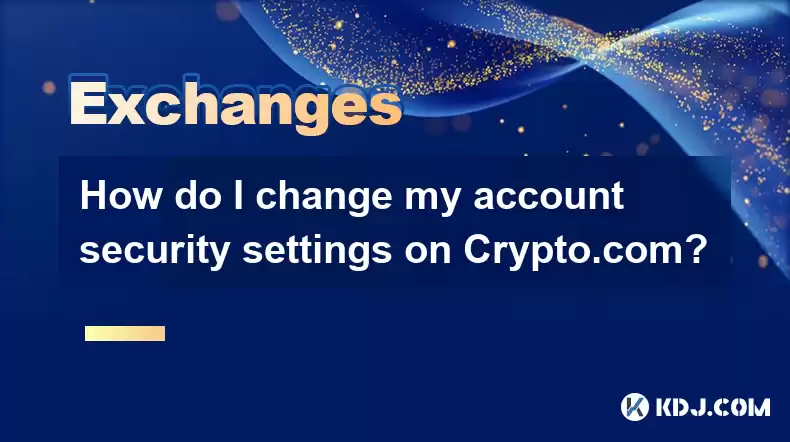-
 Bitcoin
Bitcoin $119600
0.72% -
 Ethereum
Ethereum $4175
-0.54% -
 XRP
XRP $3.207
0.44% -
 Tether USDt
Tether USDt $0.9997
-0.03% -
 BNB
BNB $795.8
-0.80% -
 Solana
Solana $178.4
-0.74% -
 USDC
USDC $0.9998
-0.01% -
 Dogecoin
Dogecoin $0.2273
-2.09% -
 TRON
TRON $0.3405
-0.28% -
 Cardano
Cardano $0.7864
-0.90% -
 Hyperliquid
Hyperliquid $44.43
1.35% -
 Chainlink
Chainlink $21.29
-0.96% -
 Stellar
Stellar $0.4411
0.55% -
 Sui
Sui $3.715
-2.92% -
 Bitcoin Cash
Bitcoin Cash $583.0
2.23% -
 Hedera
Hedera $0.2521
-2.12% -
 Ethena USDe
Ethena USDe $1.000
-0.05% -
 Avalanche
Avalanche $23.18
-1.96% -
 Litecoin
Litecoin $125.0
2.79% -
 Toncoin
Toncoin $3.311
-0.44% -
 UNUS SED LEO
UNUS SED LEO $8.996
-0.53% -
 Shiba Inu
Shiba Inu $0.00001305
-2.49% -
 Uniswap
Uniswap $10.60
-0.11% -
 Polkadot
Polkadot $3.910
-2.51% -
 Dai
Dai $0.9999
-0.03% -
 Cronos
Cronos $0.1640
2.00% -
 Ethena
Ethena $0.7932
4.93% -
 Bitget Token
Bitget Token $4.371
-1.10% -
 Monero
Monero $267.2
-1.09% -
 Pepe
Pepe $0.00001154
-3.46%
How do I change my account security settings on Crypto.com?
Crypto.com offers robust security features like 2FA, device management, and withdrawal whitelisting to protect your crypto assets; regularly review and update these settings for optimal safety.
Mar 29, 2025 at 12:21 am

Crypto.com offers a robust suite of security features to protect your cryptocurrency holdings. Understanding and utilizing these features is crucial for maintaining the safety of your assets. This guide details how to adjust your security settings within the Crypto.com app and website.
Navigating Crypto.com's Security Settings
Accessing your security settings on Crypto.com is straightforward, but the exact steps might vary slightly depending on whether you're using the mobile app or the website. Both platforms, however, prioritize a clear and intuitive interface.
For the Crypto.com app, the process generally involves:
- Opening the app and navigating to your profile section. This is usually found by tapping your profile picture or icon.
- Looking for a "Security" or "Settings" option within your profile. The exact wording may differ slightly with app updates.
- Once inside the security settings, you'll find various options to adjust, including two-factor authentication (2FA), device management, and login history review.
On the Crypto.com website, the process is similar:
- Log in to your Crypto.com account.
- Locate your profile or account settings. This is often represented by an icon of a person or a gear.
- Find the security settings section within your profile. The exact location may depend on the website's current design.
- You'll then be able to manage your security preferences, similar to the mobile app.
Two-Factor Authentication (2FA) Setup and Management
Two-Factor Authentication (2FA) is a crucial security measure. It adds an extra layer of protection beyond your password. Crypto.com supports various 2FA methods, including Google Authenticator and SMS verification.
To enable or disable 2FA:
- Navigate to your security settings as described above.
- Locate the 2FA section.
- You'll typically find options to add or remove 2FA methods. Follow the on-screen instructions for your chosen method. This usually involves scanning a QR code with your authenticator app or providing your phone number for SMS verification.
- Remember to securely store your backup codes. These are essential if you lose access to your primary 2FA device.
Password Management and Best Practices
Strong passwords are fundamental to account security. Crypto.com encourages users to create complex passwords that are difficult to guess.
- Use a combination of uppercase and lowercase letters, numbers, and symbols.
- Avoid using easily guessable information like birthdays or pet names.
- Consider using a password manager to generate and securely store strong passwords.
- Regularly update your password to further enhance security. Crypto.com might offer password change reminders or enforce periodic changes.
Device Management and Login History
Crypto.com allows you to manage the devices accessing your account. This helps you identify and potentially block unauthorized access attempts.
- Within your security settings, look for a "Devices" or "Logged-in Devices" section.
- This section will display a list of devices that have recently accessed your account, along with their location and last login time.
- If you see an unfamiliar device, you can immediately log it out to prevent further unauthorized access. Crypto.com provides clear instructions on how to perform this action.
Reviewing your login history provides valuable insight into your account activity. This can help you detect suspicious login attempts.
- Locate the "Login History" or similar section in your security settings.
- Crypto.com typically displays a detailed log of your recent logins, including timestamps and IP addresses.
- Regularly review this history to identify any potential security breaches.
Email and Phone Number Verification
Verifying your email and phone number is a critical step in securing your Crypto.com account. This allows Crypto.com to contact you in case of security issues or account recovery.
- Within your profile settings, ensure your email address and phone number are correctly entered and verified.
- Crypto.com will usually send a verification code to your email or phone number to confirm the details.
Withdrawal Addresses and Whitelisting
Managing withdrawal addresses is crucial to prevent accidental or fraudulent transfers. Crypto.com allows you to whitelist specific addresses, ensuring that funds can only be withdrawn to pre-approved destinations.
- Locate the withdrawal settings within your account.
- Add and manage your approved withdrawal addresses. Follow the on-screen instructions carefully.
- This feature provides an extra layer of security against unauthorized withdrawals.
Frequently Asked Questions
Q: What should I do if I suspect unauthorized access to my Crypto.com account?
A: Immediately contact Crypto.com's customer support and change your password. Disable any connected devices and enable 2FA if you haven't already.
Q: How often should I review my login history?
A: It's advisable to review your login history at least once a month, or more frequently if you suspect any suspicious activity.
Q: What are the consequences of not enabling 2FA?
A: Not enabling 2FA significantly increases the risk of unauthorized access to your account, potentially leading to the loss of your cryptocurrency.
Q: Can I recover my account if I lose access to my 2FA device?
A: Yes, Crypto.com provides recovery options, but this typically involves using your backup codes or contacting their customer support. It is crucial to securely store these backup codes.
Q: What if I forget my password?
A: Crypto.com has a password recovery process. You'll typically be prompted to answer security questions or receive a password reset link to your verified email address.
Q: How do I report a security issue or vulnerability?
A: Crypto.com usually has a dedicated security contact or reporting channel on their website. Use this channel to report any potential security issues.
Disclaimer:info@kdj.com
The information provided is not trading advice. kdj.com does not assume any responsibility for any investments made based on the information provided in this article. Cryptocurrencies are highly volatile and it is highly recommended that you invest with caution after thorough research!
If you believe that the content used on this website infringes your copyright, please contact us immediately (info@kdj.com) and we will delete it promptly.
- Superman Takes Flight: A Deep Dive into the Comic Program and Coin Medals
- 2025-08-11 20:30:12
- Shiba Inu's Comeback Trail and the Meme Coin Mania: Can $SHIB Deliver a 12,000x Return?
- 2025-08-11 18:30:11
- Proof of Trust, Transparency, and User Safety: Keeping Crypto Real
- 2025-08-11 18:50:12
- Pudgy Penguins, Bitcoin Penguins, and the $22M Meme Coin Mania: A New York Perspective
- 2025-08-11 17:10:11
- Bitcoin L2 Heats Up: SatLayer (SLAY) Lists on KuCoin Amidst Layer-2 Boom
- 2025-08-11 16:50:12
- Ethereum, Coin Market Cap, and Solfart Token: A Wild Ride in the Crypto Universe
- 2025-08-11 17:50:12
Related knowledge

How to use margin trading on Poloniex
Aug 08,2025 at 09:50am
Understanding Margin Trading on Poloniex

How to read the order book on KuCoin
Aug 10,2025 at 03:21pm
Understanding the Order Book Interface on KuCoinWhen accessing the order book on KuCoin, users are presented with a real-time display of buy and sell ...

How to set price alerts on Kraken
Aug 11,2025 at 08:49pm
Understanding Price Alerts on KrakenPrice alerts on Kraken are tools that allow traders to monitor specific cryptocurrency pairs for price movements. ...

How to use advanced trading on Gemini
Aug 08,2025 at 04:07am
Understanding Advanced Trading on GeminiAdvanced trading on Gemini refers to a suite of tools and order types designed for experienced traders who wan...

How to use advanced trading on Gemini
Aug 08,2025 at 10:56pm
Understanding Advanced Trading on GeminiAdvanced trading on Gemini refers to the suite of tools and order types available on the Gemini ActiveTrader p...

How to get my API keys from KuCoin
Aug 08,2025 at 06:50pm
Understanding API Keys on KuCoinAPI keys are essential tools for users who want to interact with KuCoin's trading platform programmatically. These key...

How to use margin trading on Poloniex
Aug 08,2025 at 09:50am
Understanding Margin Trading on Poloniex

How to read the order book on KuCoin
Aug 10,2025 at 03:21pm
Understanding the Order Book Interface on KuCoinWhen accessing the order book on KuCoin, users are presented with a real-time display of buy and sell ...

How to set price alerts on Kraken
Aug 11,2025 at 08:49pm
Understanding Price Alerts on KrakenPrice alerts on Kraken are tools that allow traders to monitor specific cryptocurrency pairs for price movements. ...

How to use advanced trading on Gemini
Aug 08,2025 at 04:07am
Understanding Advanced Trading on GeminiAdvanced trading on Gemini refers to a suite of tools and order types designed for experienced traders who wan...

How to use advanced trading on Gemini
Aug 08,2025 at 10:56pm
Understanding Advanced Trading on GeminiAdvanced trading on Gemini refers to the suite of tools and order types available on the Gemini ActiveTrader p...

How to get my API keys from KuCoin
Aug 08,2025 at 06:50pm
Understanding API Keys on KuCoinAPI keys are essential tools for users who want to interact with KuCoin's trading platform programmatically. These key...
See all articles

























































































